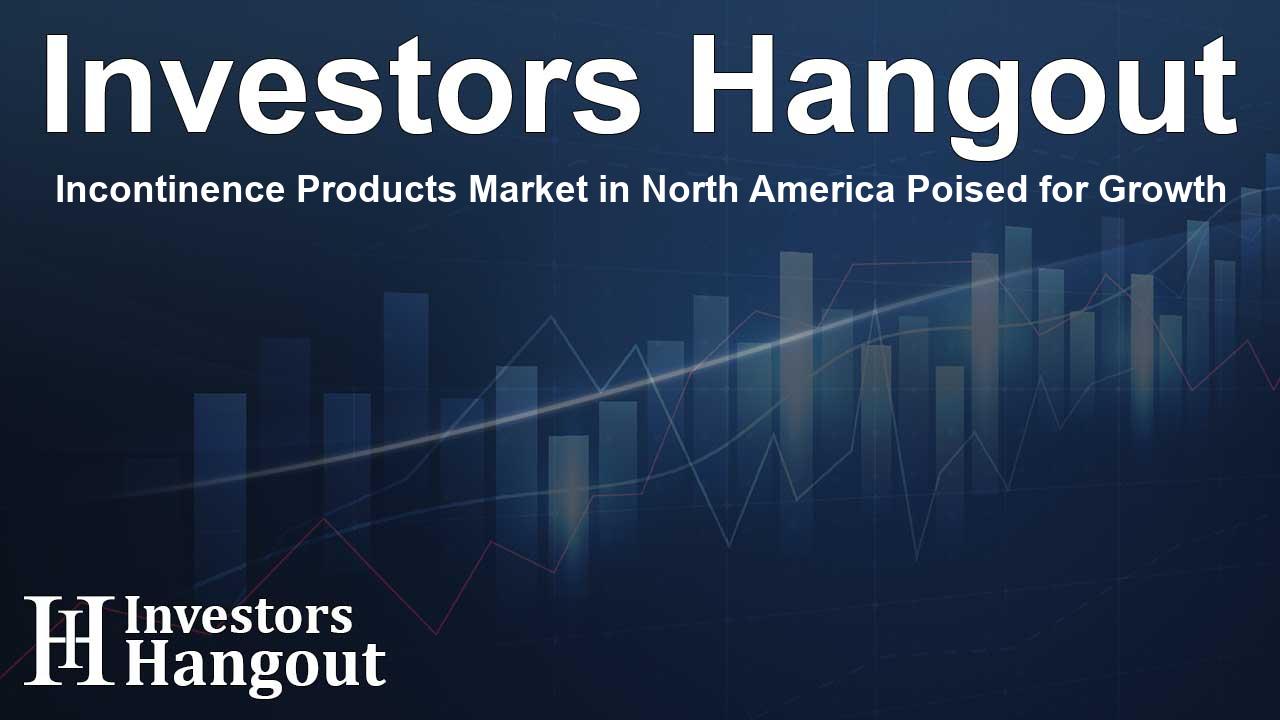Incontinence Products Market in North America Poised for Growth

Understanding the North America Adult Incontinence Products Market Growth
The adult incontinence products market in North America has experienced remarkable growth, currently valued at US$ 3,138.3 million in recent evaluations. Experts estimate it will reach an impressive US$ 6,077.5 million by 2032, showcasing a CAGR of 7.62%. This significant expansion is largely attributed to an aging population and rising awareness of incontinence issues.
Demographic Factors Driving Demand
One of the primary factors stimulating growth in the adult incontinence products market is the increasing number of older adults in North America. In particular, the U.S. has over 54 million individuals aged 65 and older, with around 25 million experiencing urinary incontinence. This substantial demographic creates a vast potential customer base for manufacturers looking to provide tailored incontinence solutions.
Sales Volume and Consumer Behavior Insights
Sales data reflects significant consumer demand, with annual sales of adult incontinence products surpassing 255 million units. To effectively harness these opportunities, companies are investing in extensive market research to understand consumer behavior. With more than $500 million dedicated to research and insights, companies are able to identify regional market trends and preferences, particularly focusing on urban areas where the elderly population is concentrated.
Leading Companies in the Market
Dominating this sector are key players like Kimberly-Clark, Procter & Gamble, and Essity. The adult care segment from Kimberly-Clark offers renowned brands such as Depend and Poise. These companies rely on vast distribution networks, ensuring their products are accessible to consumers across more than 100,000 retail outlets and a growing number of e-commerce platforms.
Innovations Shaping the Future of Incontinence Products
Innovation plays a critical role in the advancement of the adult incontinence market. Companies are continuously pushing boundaries to introduce products that emphasize comfort, discretion, and environmental sustainability. The development of ultra-absorbent materials enables products to hold significantly more liquid while remaining lightweight and easy to wear, enhancing comfort for the user.
There’s also a noticeable trend towards eco-friendly solutions. Some manufacturers are creating biodegradable products in response to growing consumer demand for sustainable options. Moreover, the emergence of smart incontinence management systems, equipped with monitoring sensors, indicates a shift towards technology-driven solutions, expected to see robust sales growth in the near future.
Key Findings and Market Segmentation
Research highlights several key segments within the market. Protective incontinence garments lead the market with a substantial share, fueled by ongoing innovations in material technology. Meanwhile, the dominance of disposable products reveals a preference for convenience, contributing significantly to overall revenue with an impressive 80.5% market share.
The female-focused segment exemplifies an empowering trend, holding over 76.7% of the market share. This indicates a strong demand for products specifically designed for women, taking into consideration their unique physiological needs and comfort requirements.
Market Drivers, Trends, and Challenges
The growth in this sector is driven by multiple factors, including:
- The rapidly aging population resulting in higher incidences of incontinence.
- Increased awareness and reduced stigma associated with incontinence products.
- Technological advancements that lead to more effective and comfortable products.
However, the market also faces certain challenges, ranging from the high costs of premium products potentially limiting affordability to environmental concerns related to disposable items and the lingering stigma surrounding incontinence.
Conclusion and Opportunities Ahead
As the North America adult incontinence products market continues to grow, companies are prioritizing innovation, customization, and sustainability to capitalize on emerging opportunities. By aligning product offerings with consumer needs and preferences, businesses can tap into a burgeoning market poised for expansion. The future holds considerable promise as more stakeholders enter the field, enhancing accessibility and support for individuals managing incontinence issues.
Frequently Asked Questions
What is the projected market value for adult incontinence products by 2032?
The adult incontinence products market is projected to reach US$ 6,077.5 million by 2032.
What drives the growth of this market?
The primary drivers include the aging population, increased awareness, and innovative product development.
Who are the leading companies in the market?
Key players include Procter & Gamble, Kimberly-Clark, and Essity, among others.
What trends are influencing product development?
Trends include a focus on eco-friendly products, smart technology, and custom-fit designs for consumers.
What challenges does the market face?
Challenges include high product costs and social stigma associated with incontinence issues.
About Investors Hangout
Investors Hangout is a leading online stock forum for financial discussion and learning, offering a wide range of free tools and resources. It draws in traders of all levels, who exchange market knowledge, investigate trading tactics, and keep an eye on industry developments in real time. Featuring financial articles, stock message boards, quotes, charts, company profiles, and live news updates. Through cooperative learning and a wealth of informational resources, it helps users from novices creating their first portfolios to experts honing their techniques. Join Investors Hangout today: https://investorshangout.com/
Disclaimer: The content of this article is solely for general informational purposes only; it does not represent legal, financial, or investment advice. Investors Hangout does not offer financial advice; the author is not a licensed financial advisor. Consult a qualified advisor before making any financial or investment decisions based on this article. The author's interpretation of publicly available data shapes the opinions presented here; as a result, they should not be taken as advice to purchase, sell, or hold any securities mentioned or any other investments. The author does not guarantee the accuracy, completeness, or timeliness of any material, providing it "as is." Information and market conditions may change; past performance is not indicative of future outcomes. If any of the material offered here is inaccurate, please contact us for corrections.